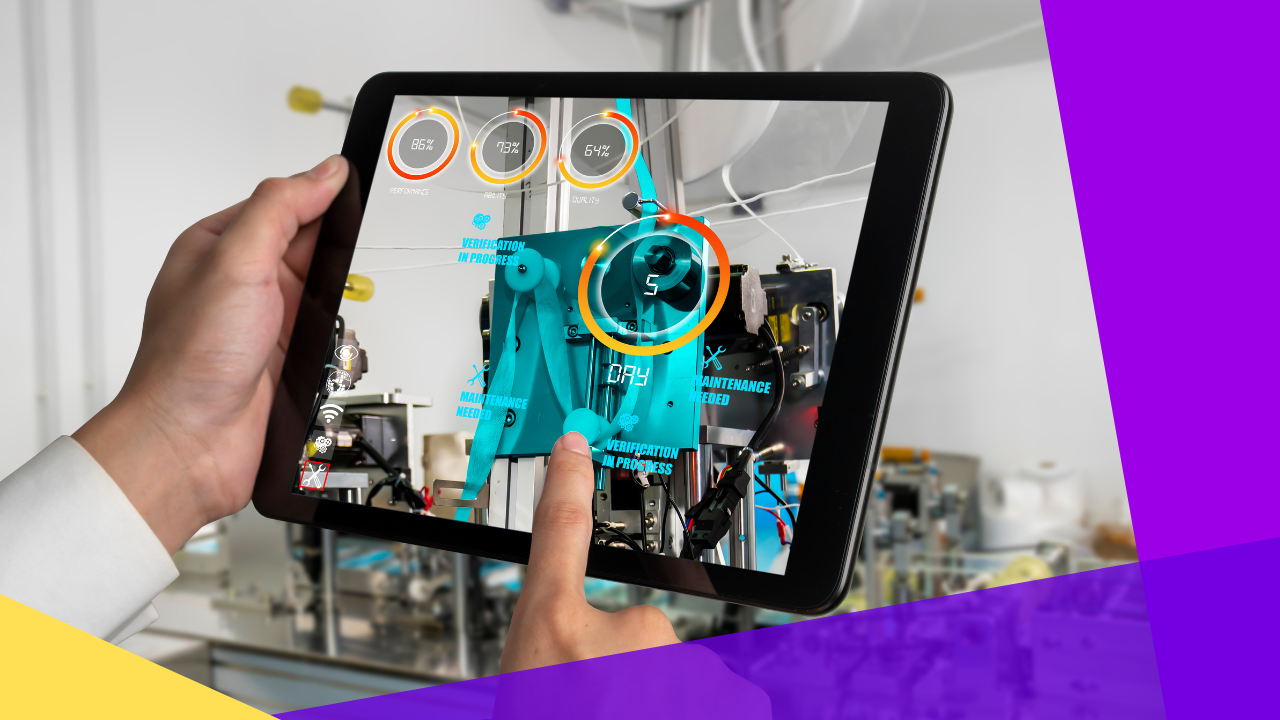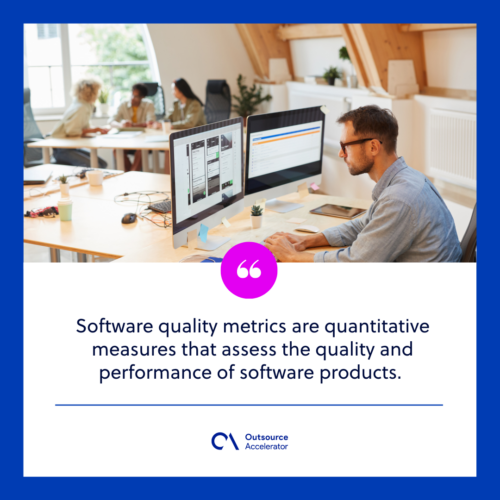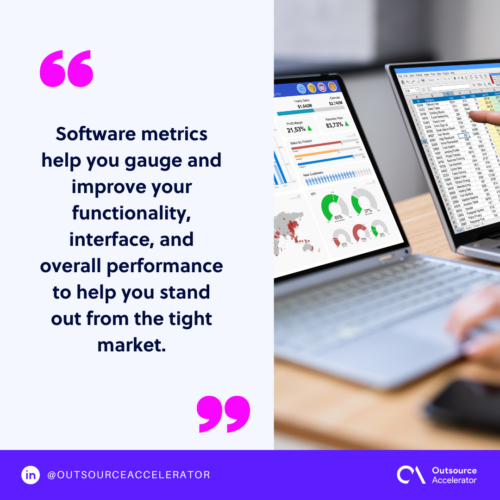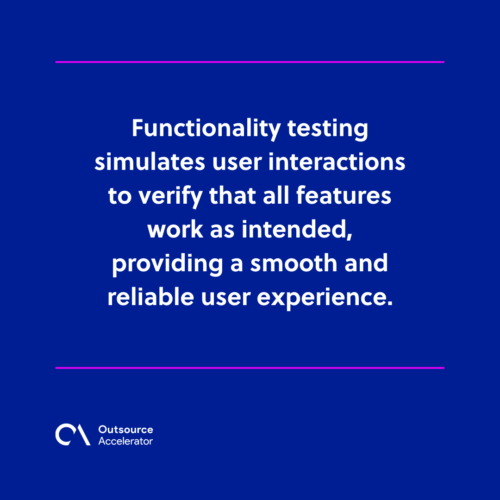10 key software quality metrics to focus on

Developing an app is no simple feat for businesses in general. The journey from software conceptualization to deployment demands meticulous attention to detail.
As more people rely on apps for their daily lives, the standards for a successful application have soared.
Some of the features users expect in an app nowadays include seamless functionality, glitch-free experiences, and intuitive interfaces. This heightened user demand has elevated the significance of software quality to unprecedented levels.
Quality software can define the success or failure of a software product. With this, software quality metrics serve as a development team’s standard in ensuring the app looks and functions as intended.
This article will explore the importance of monitoring software quality metrics and highlight ten key metrics that every organization should focus on.
Defining software quality metrics
Software quality metrics are quantitative measures that assess the quality and performance of software products. These often apply from the development proper to the quality assurance phase, checked by software engineering and beta testing teams.
These metrics help organizations evaluate the effectiveness of their development processes, identify areas for improvement, and find ways to enhance software quality.
Apart from building quality software products, nearshore and offshore development teams from service providers such as Arcanys are trained to maintain top-tier standards according to their set quality metrics.
Software quality metrics are classified into three categories:
- Product metrics. Product metrics focus on the characteristics and functionality of a product. It looks at features such as navigation, UI/UX design, and complexity.
- Process metrics. Process metrics look at the product’s development and maintenance activities. Early on, teams can check for defects and fixes to prevent them from happening.
- Project metrics. Lastly, project metrics look into the overall development project and its execution. It includes the number of employees in the project, the staffing patterns throughout the lifecycle, and changes in costing, processes, and client expectations.

Why monitor software quality metrics?
Effective monitoring of software quality metrics offers numerous benefits for organizations.
Let’s delve into three key reasons why monitoring software quality metrics is crucial:
Identifying defects and issues
Identifying defects and issues in software development is crucial for ensuring high-quality products, and this is where software quality metrics matter.
Monitoring software quality metrics helps teams identify defects and issues early. This allows for timely intervention, reducing the impact on project timelines and costs.
For example, tracking metrics such as code complexity and defect density helps identify complex code segments and areas prone to defects.
Fixing these issues early ensures the development team can address them before they become major problems.
Improving development processes
Software quality metrics provide insights into the efficiency of development processes. These metrics help project managers identify bottlenecks, inefficiencies, and areas for improvement.
For instance, code coverage and test case effectiveness can highlight areas where testing efforts can be optimized. This enables organizations to improve development processes, enhance productivity, and deliver higher-quality software products.
Meeting customer expectations
Customers have high expectations when it comes to software usability, functionality, and reliability. Monitoring software quality metrics allows organizations to meet these expectations.
Metrics such as customer satisfaction scores, error rates, and response times provide valuable data on how well the software meets its user’s needs.
Organizations can make informed decisions using this data to enhance their mobile customer experience.
Competitive advantage
In today’s competitive market, your software quality can set you apart. Users are more likely to choose a product that is reliable and efficient.
High-quality software can give you a significant edge over your competitors.
Software metrics help you gauge and improve your functionality, interface, and overall performance, helping you stand out in a tight market.

10 key software quality metrics to focus on
The ISO/IEC 5055:2021 measures the internal structure of a software product through its source codes. It gages software quality based on four factors:
- Security
- Reliability
- Performance efficiency
- Maintainability
Given the categories and standards mentioned, here are the ten key software quality metrics you should focus on when developing your software product:
1. Code quality
At the heart of any software lies its codebase – a meticulously crafted collection of instructions that govern its behavior.
Quality code is stable, easy to understand, and can be modified without causing application glitches or problems.
Code quality gauges the health of this underlying foundation. It encompasses factors such as readability, maintainability, and adherence to coding standards.
By focusing on code quality, development teams ensure that the software remains flexible, extensible, and robust over time.
2. Reliability
Reliability is the bedrock upon which user trust is built. This metric measures the software’s ability to consistently deliver its intended functionality without unexpected crashes or failures.
Users depend on software that behaves predictably and consistently. Reliability is not only about minimizing crashes. It ensures that the software performs as expected, even under varying conditions.
3. Testability
Testability is the gateway to software improvement. It assesses how easily the software can be tested to identify defects and flaws.
High testability enables efficient testing processes, allowing development teams to detect issues early and rectify them before they escalate. Consider it as the ability to pinpoint a leak in a ship before it turns into a flood.
A high-testable software has five elements:
- Logging. High-testable systems have effective logs that detail web service commands, who made them, and where and when they happened.
- Message passing. Testable software has the ability to capture and relay message transfers on demand.
- Components. Beyond scripting commands, teams must be able to create test servers based on their existing ones through the cloud.
- Swappable components. Testable systems also have mock and fake components they can remove to isolate a function they will test.
- Infrastructure. Lastly, testable software has its entire infrastructure as code, which can be tested in a realistic environment.
A software application with low testability hampers the identification of defects, resulting in potentially costly and time-consuming bug fixes later on.
4. Functionality
Functionality is the software’s visible face—the features and capabilities that users interact with. This metric examines whether the software delivers its promised functionalities accurately and efficiently.
Imagine an email application that claims to send messages but consistently fails to do so. Ensuring the software’s features align with user expectations is paramount to user satisfaction and retention.
Functionality testing simulates user interactions to verify that all features work as intended, providing a smooth and reliable user experience.
5. System performance
In a world where speed is a virtue, system performance is a critical metric. It measures the software’s response time, efficiency, and resource utilization under different workloads.
Users have little patience for sluggish software that lags or freezes.
System performance is not just a luxury. It determines user satisfaction and business success.
6. Defect management
Defect management gauges the software’s ability to handle and address defects effectively. It encompasses defect detection, reporting, prioritization, and resolution.
The ability to identify and rectify defects in a timely manner reduces the risk of catastrophic failures post-launch. Defect management is akin to addressing small leaks in a boat before they compromise its integrity.
By diligently managing defects, development teams ensure that the software remains stable, secure, and reliable.
7. Platform adaptability
The digital landscape is diverse, with users accessing software from various platforms and devices.
Platform adaptability measures the software’s ability to function consistently across different operating systems, browsers, and devices. It ensures that users receive a seamless experience regardless of their preferred platform.
For instance, mobile development teams nowadays are more fond of creating apps for both Android and iOS platforms for flexibility and to help brands gain more user base.
8. Security
Security is non-negotiable in developing an app. Cyber threats such as data breaches loom even in mobile games and utility apps that do not seem vulnerable.
This metric assesses the software’s resilience against unauthorized access and vulnerabilities.
A software application with robust security measures safeguards user data and maintains user trust, contributing to long-term success.
9. Interface accessibility
A user-friendly interface is the bridge between users and software functionality.
This metric measures users’ ability to navigate and interact with the software’s interface. It includes considerations for usability, intuitiveness, and adherence to accessibility standards.
Just as a well-designed storefront attracts customers, an intuitive interface draws users into the software experience. It also encourages engagement and fosters positive user sentiments.
10. Documentation
Documentation is the unsung hero of software development.
It assesses the clarity, comprehensiveness, and accuracy of the accompanying documentation that guides users and developers in using and maintaining the software.
Quality documentation empowers users and developers to understand, troubleshoot, and leverage the software effectively.
Moreover, quality documentation opens the chance for code reusability, allowing the team to build quality software in the future.

Guidelines for identifying and monitoring software quality metrics
To effectively identify and monitor software quality metrics, organizations should adhere to the following guidelines:
- Define clear objectives. Define the objectives and goals you want to achieve by monitoring software quality metrics.
- Select relevant metrics. Choose those relevant to your software development process, project, and organization.
- Set baseline benchmarks. Establish benchmarks for each metric to track progress and identify areas requiring improvement.
- Monitor metrics regularly. Continuously monitor software quality metrics throughout the software development lifecycle to capture valuable insights and trends.
- Take corrective actions. Take proactive actions based on the insights gained from software quality metrics to address any deficiencies or areas requiring improvement.
Monitoring software quality metrics is vital in assessing and improving software products’ quality, reliability, and performance.
Organizations can enhance their development processes, meet customer expectations, and deliver exceptional software products.







 Independent
Independent




